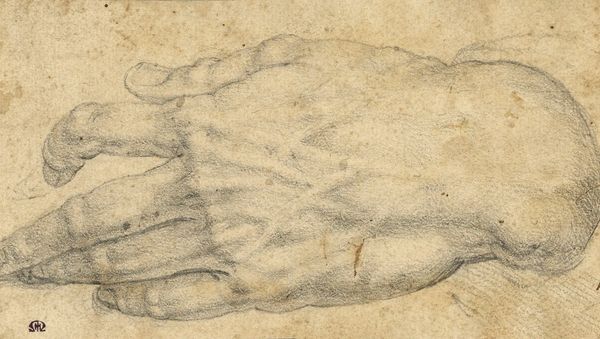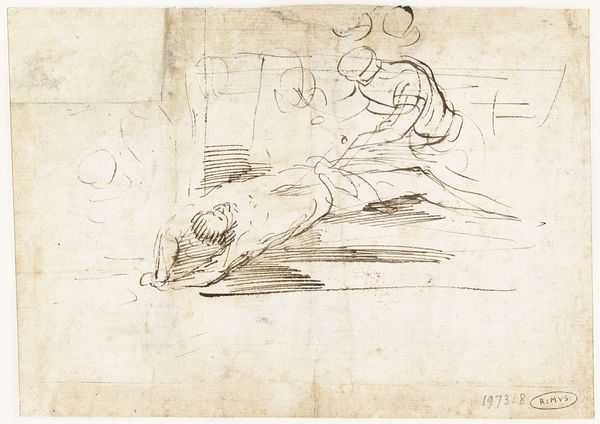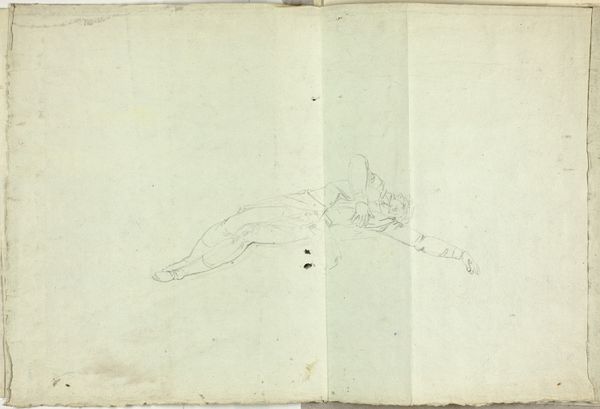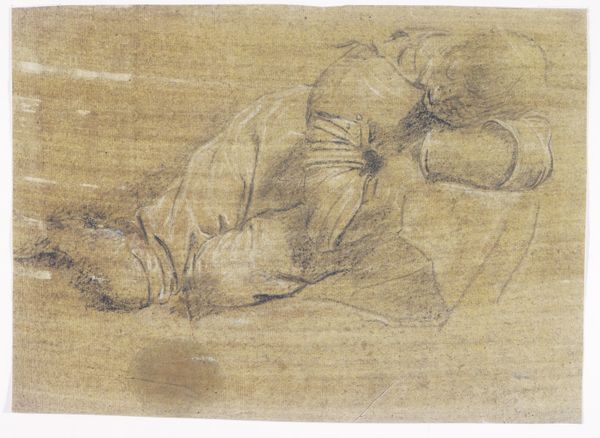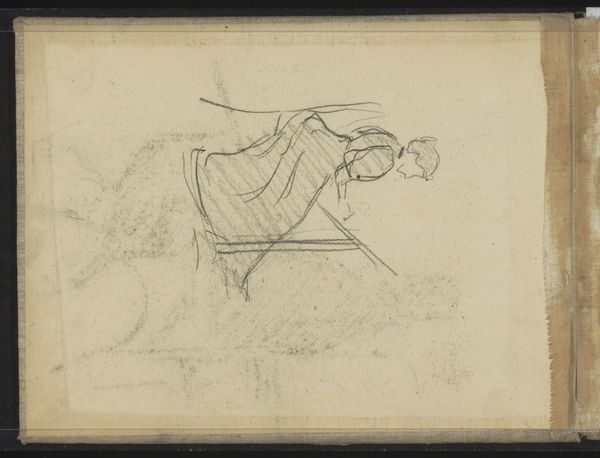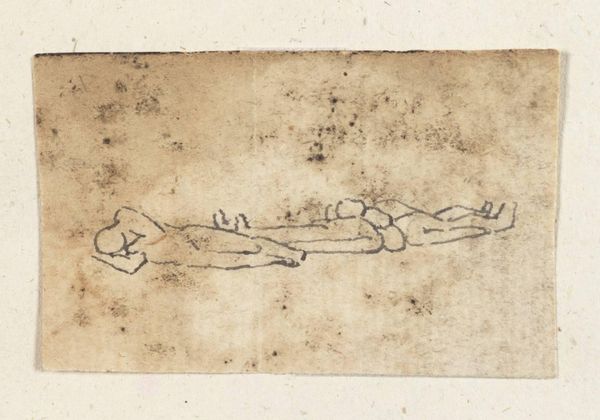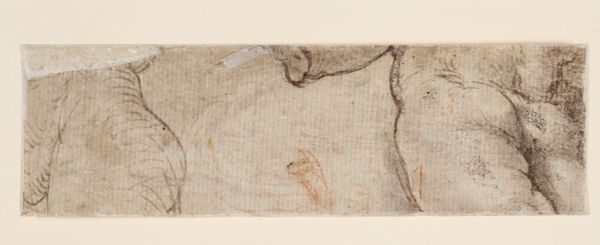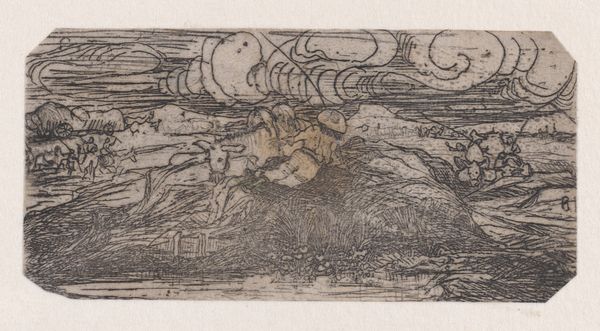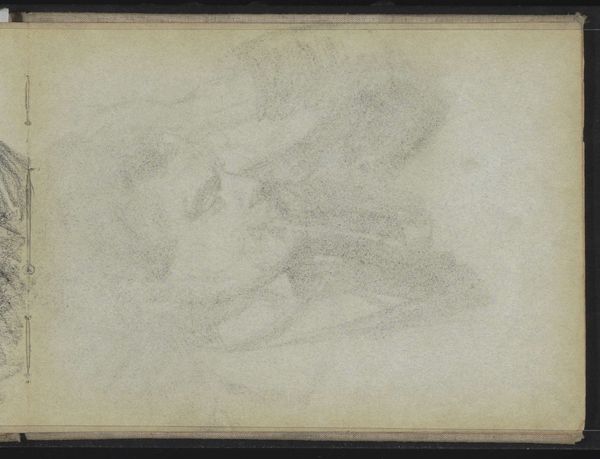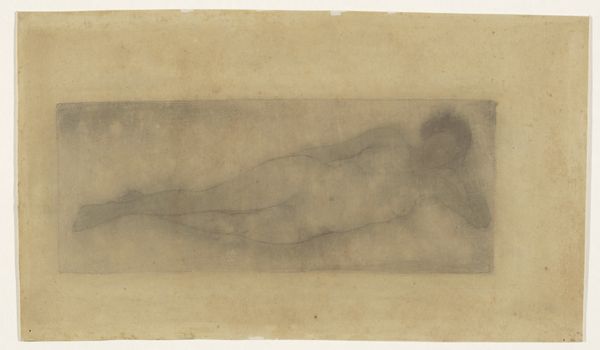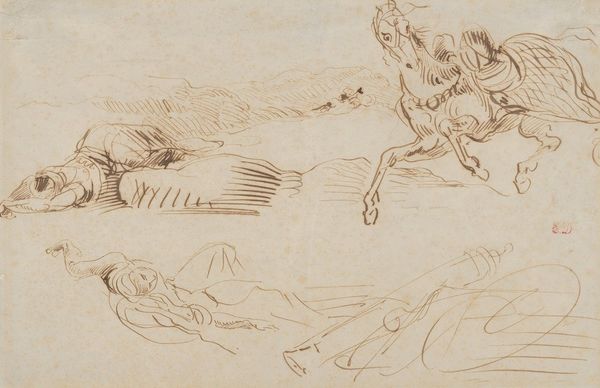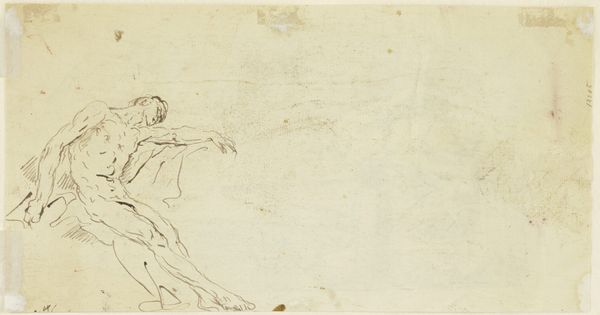
drawing, print, paper, ink, pen, charcoal
#
drawing
# print
#
charcoal drawing
#
paper
#
11_renaissance
#
ink
#
pen
#
charcoal
#
academic-art
#
charcoal
Dimensions: 65 × 254 mm
Copyright: Public Domain
Editor: Here we have *Academic Arm, Extended*, attributed to the Circle of Michelangelo Buonarroti, dating from around 1500 to 1510. It’s a drawing in pen, ink and charcoal on paper. It looks like a study, perhaps for a larger composition. The hatching and cross-hatching create a really strong sense of musculature. What stands out to you, in terms of technique and form? Curator: The formal qualities are indeed compelling. Note the precision of line and the strategic use of shadow. It isn’t just representation; the artist has actively constructed the form through carefully applied strokes. Where does your eye settle as you examine the drawing? Editor: My eye is drawn to the hand and forearm. The rendering feels more complete than the upper arm, almost as though the artist paid more attention to those areas, highlighting its function. What do you mean when you say they constructed the form? Curator: Consider the relationship between line and form. The hatching isn't simply filling in an outline, but defining the planes, suggesting depth, and implying a light source. The artist’s choice of medium – ink, pen, and charcoal – allows for varied textures and tonalities, each contributing to the overall structure of the arm. Do you see any geometric patterns? Editor: I can see what you mean, particularly the varying weight of the lines. And now I see it, the construction; the cross hatching creates many overlapping squares in varied densities. I hadn't noticed that before! Thanks to you I can appreciate it from the artist’s point of view and recognize all their decisions to define the planes with a kind of personal geometry. Curator: Exactly. It’s in these visual choices that the artwork reveals its own unique structural language, and hopefully, inspires us.
Comments
No comments
Be the first to comment and join the conversation on the ultimate creative platform.
